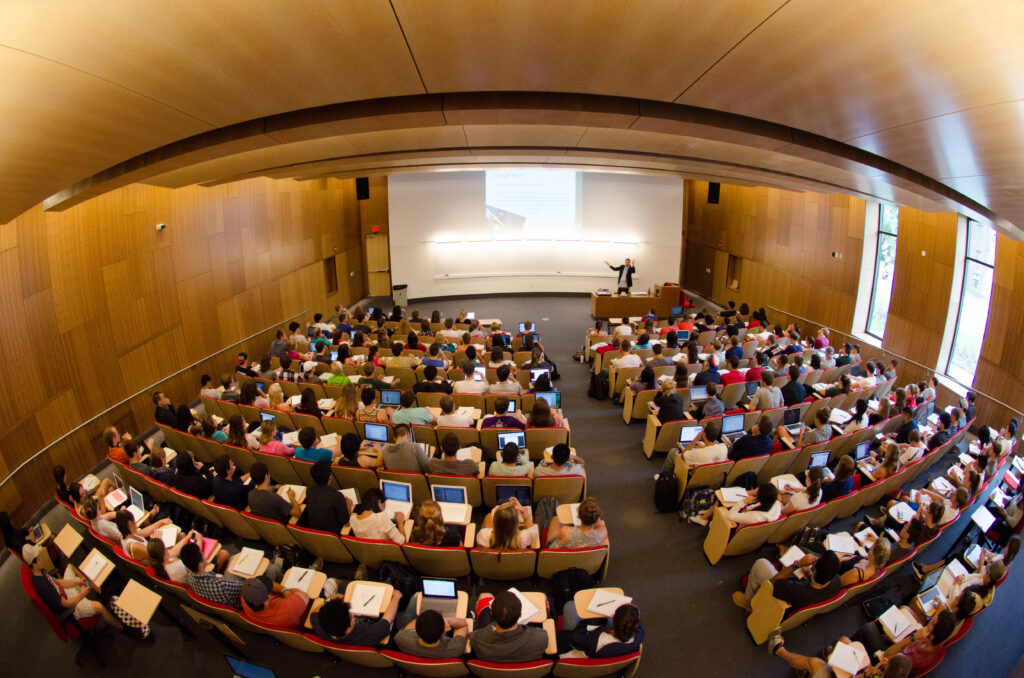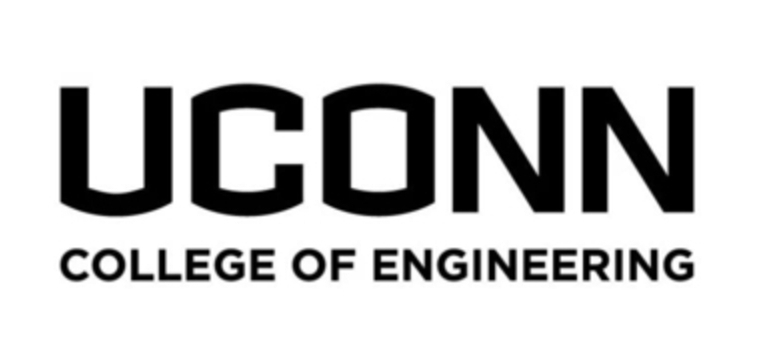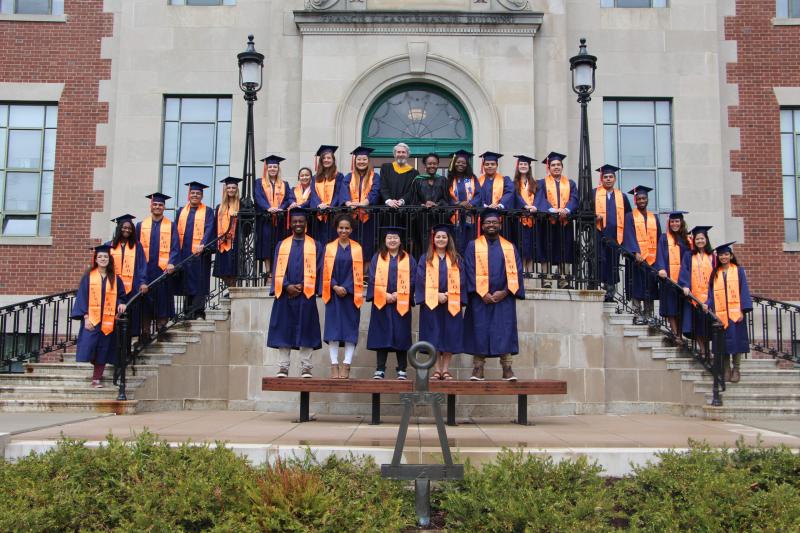
The Vergnano Institute for Inclusion (VII) is leading the College of Engineering (COE) community to develop a comprehensive and action-oriented Diversity, Equity, and Inclusion (DEI) Plan.
What is a DEI Plan? A DEI plan is a strategic roadmap developed by organizations to address and promote diversity, equity, and inclusion within their workforce, policies, and practices. These plans are designed to create an environment where all individuals, regardless of their background, identity, or characteristics, feel valued, respected, and included.
Why create a DEI Plan? We aspire to be a community where all members thrive (rather than survive). A community where everyone feels a sense of belonging and being valued, heard and respected, and comfortable to persist towards their personal and professional goals. In higher education, diversity, equity, and inclusion are inextricably linked to excellence, and without a plan, there is a missed opportunity towards collective growth embedded with actions and metrics that keep us honest, transparent, and accountable to our goals. As we elevate to a College of Engineering, now is the perfect time to define who we are, what makes us great, and how we want to improve. Several institutions have School/College of Engineering-specific DEI plans. Examples include our peers at Rutgers University, similarly ranked institutions such as Dartmouth, or other outstanding institutions such as UC Davis or Massachusetts Institute of Technology. We are excited and ready to do this necessary and important work for Connecticut’s Flagship Institution.



Approach
We choose to organize our plan using a combination of three change models and theories that are research and/or community supported. We are inspired by the National Science Foundation (NSF) INCLUDE Alliance’s alignment with the models listed below.
- Inspired by the Strive Together Theory of Action
- Grounds us with shared community vision, evidence-based decision making, collaborative action, and investment and sustainability
- Inspired by the Water of Systems Change
- Guides us using 6 frames: policies, practices, resource flows, relationships and connections, power dynamics, and mental models
- Inspired by the Changing Workforce Systems
- Aligns our work by systems and stakeholders, activities, and goals, and measuring outputs and outcomes
Plan Overview (Draft October 2024)
Policies
- Systemic Barriers in Academic Policies
- Equity-Focused Courses and Inclusive Curriculum
- Review of Current COE Policies
- Inclusive Hiring Strategies
Practices
- Inclusive and Culturally Intelligent Experiential Learning
- Tracking and Supporting Students’ Goals and Needs
- Supporting Research and Broadening Participation
- Supporting APiR and teaching-related inclusive or equitable initiatives
- Understanding Retention in Engineering
Resource Flows
- Examine COE and Departmental Budgets
- Equity-based Scholarships
- Internal Funding Mechanisms
- Information Access
Relationships and Connections
- Fostering Mentoring, Connection and Community
- Breaking Silos or Barriers to Collaboration
- Examine the Undergraduate and Graduate Student Experience
- Examine the Staff Experience
- Support Internal and External Broadening Participation or Equity-Focused Efforts
Power Dynamics
- Include the Undergraduate and Graduate Student Voice
- Increase Learning Opportunities for Employees
- Align Experiences with Initiatives
Mental Models
- Growth and Thriving Mindsets
- Positive Foundations and Onboarding
- Understanding Community Members’ Role and Value
Plan Details
We present our plan in “choose your own adventure” style so that you can engage with the plan and its content in ways that match how you like to learn or process information.
Option 1 – Action-Oriented Thinking
The information is presented with examples framed as actions that could be done towards completing the goal.
These actions listed based on community input. We embrace the flexibility that this list can change or add actions based on growing or changing requests or needs from our community and the world.
Option 2 – Inquiry-Oriented Thinking
The information is presented with guiding questions that encourage creativity in determining how a goal is achieved.
We encourage our community to consider how you as individuals with your own spheres of influence can be a part of or contribute to the plan.
Regardless of which option you choose, the information conveyed is the same.
Policy | Highlights of Community-Generated Actions |
Policy 1.1 – Systemic Barriers in Academic Policies Communicate and align with educators in our state to strive towards positive and productive “passing of the baton” for transitioning students. | 1.1.1 – Understand the admissions rates for high schools in Connecticut into Engineering, and factors affecting student applications and admissions. 1.1.2 – Alignment with Connecticut High School curricula and learning outcomes. 1.1.3 – Review prerequisite and co-requisite course requirements for each COE major using curricular analytics to minimize curricular complexity and identify blocking factors. 1.1.4 – Increase community college and regional college course transfer equivalencies |
Policy 1.2 – Equity-Focused Courses and Inclusive Curriculum Examine the educational framework to anchor curriculum with courses in equity to integrate a broader understanding of historical context in our world | 1.2.1 – Continue to update VII course documentation to align with common curriculum and engineering curricular value systems 1.2.2 – Request and support COE faculty in creating or updating courses to be equity-focused and inclusive 1.2.3 – Value and invite presentations considering or centering equity or inclusion in departmental or college seminars |
Policy 1.3 – Review Current COE Policies Define the relative value of the three primary inputs: student experience, faculty self-assessment, peer observation, and the implementation recommendations | 1.3.1 – Review each school and departments’ policies for equitable and inclusive language and implementation. 1.3.2 – Post policies on COE employee intranet for transparency and benchmarking between units. 1.3.3 – Co-create revisions as needed towards equitable and inclusive policies |
Policy 1.4 – Inclusive Hiring Strategies Review potential candidates not only for their record of excellence, but also the potential to bring diversity in representation, research and practice to our campus. | 1.4.1 – Understand current hiring practices in COE 1.4.2– Support search committees to implement inclusive hiring rubrics and inclusive-minded representatives |
| Practice | Highlights of Community-Generated Actions |
Practice 2.1 – Inclusive and Culturally Intelligent Experiential Learning Remove the disconnect between the strong theoretical grounding received in classrooms, and the identities and roles they envision after graduation through hands-on applications and experiences directly connected to career pathways. | 2.1.1 – Support Equity-Focused Experiential Learning Initiatives 2.1.2 – Create a collaboration between internal and external partners towards understanding how each define inclusion, celebrate diversity, and provide culturally-intelligent learning and mentoring experiences. 2.1.3 – Collaborate with faculty advisors in developing and implementing an inclusive mentoring plan for graduate students 2.1.4 – Support growth and learning of industry partners toward inclusive mentoring and training of interns and new employees |
Practice 2.2 – Tracking and Supporting Students’ Goals and Needs Understand each student’s unique circumstances, learning styles, and aspirations, ensuring that they receive tailored support to succeed in their education. | 2.2.1 – Understand current marketing and scope of CT College of Technology Pathway Program 2.2.2 – Create summer programing to support transition from Community College and build community |
Practice 2.3 – Supporting Research and Broadening Participation Commit to enhancing the quality and scope of research initiatives by providing funding, resources, and opportunities for all faculty. | 2.3.1 – Improve training and workshops for faculty about VII and broadening participation 2.3.2 – Formalize faculty consultations for broadening participation and DEI initiatives 2.3.3 – Create database of all sought and awarded broadening participation efforts 2.3.4 – Invite faculty to VII End of Year Showcase to present progress on efforts, and provide community feedback and accountability |
Practice 2.4 – Supporting APIR and teaching-related DEI initiatives Amplify and support faculty efforts towards inclusive teaching, | 2.4.1 – Amplify and support faculty efforts towards inclusive teaching 2.4.2 – Educate and support faculty in supporting neurodiverse students and accommodations 2.4.3 – Create faculty learning communities to support classroom-based research or DEI in the classroom |
Practice 5 – Understanding Retention in Engineering Collect and understand existing quantitative and qualitative data | 2.5.1 – Collect and understand existing quantitative and qualitative data from advisors 2.5.2 – Modify major change form to collect intentions or reasons for change 2.5.3 – Offer REACH-focused meetings prior to approving major change |
| Policy | Guiding Questions |
Policy 1.1 – Systemic Barriers in Academic Policies Communicate and align with educators in our state to strive towards positive and productive “passing of the baton” for transitioning students. | What factors affect applications and admission for high schools in Connecticut into Engineering? How could alignment with Connecticut High School curricula and learning outcomes better support student success at UConn? What is the impact of examining prerequisite and co-requisite course requirements for each COE major using curricular analytics to minimize curricular complexity and identify blocking factors? What policies need to change in order to increase community college and regional college course transfer equivalencies? |
Policy 1.2 – Equity-Focused Courses and Inclusive Curriculum Examine the educational framework to anchor curriculum with courses in equity to integrate a broader understanding of historical context in our world. | How can we support COE faculty in creating or updating courses to be equity-focused and inclusive? What would change if we regularly invited presentations considering or centering equity or inclusion in departmental or college seminars? |
Policy 1.3 – Review Current COE Policies Define the relative value of the three primary inputs: student experience, faculty self-assessment, peer observation, and the implementation recommendations | Do you regularly review policies for equitable and inclusive language and implementation? Do you post policies on COE employee intranet for transparency and benchmarking between units? What support is needed to co-create policy revisions towards equitable and inclusive policies? |
Policy 1.4 – Inclusive Hiring Strategies Review potential candidates not only for their record of excellence, but also the potential to bring diversity in representation, research and practice to our campus. | What are ways to better understand current hiring practices in CoE to support search committees? |
| Practice | Guiding Questions |
Practice 2.1 – Inclusive and Culturally Intelligent Experiential Learning Remove the disconnect between the strong theoretical grounding received in classrooms, and the identities and roles they envision after graduation through hands-on applications and experiences directly connected to career pathways. | What does support Equity-Focused Experiential Learning Initiatives look like? How might we create collaborations between internal and external partners to provide culturally-intelligent learning and mentoring experiences? What role do faculty advisors play in developing and implementing an inclusive mentoring plan for graduate students? What tools do we have to support industry partners toward inclusive mentoring and training of interns and new employees? |
Practice 2.2 – Tracking and Supporting Students’ Goals and Needs Understand each student’s unique circumstances, learning styles, and aspirations, ensuring that they receive tailored support to succeed in their education. | What is the current marketing and scope of CT College of Technology Pathway Program? How could summer program opportunities support transition from Community College and build community? |
Practice 2.3 – Supporting Research and Broadening Participation Commit to enhancing the quality and scope of research initiatives by providing funding, resources, and opportunities for all faculty. | What trainings and workshops would be needed? How are faculty designing and describing broadening participation in grant proposals? How are faculty sharing information about their work in broadening participation efforts? |
Practice 2.4 – Supporting APIR and teaching-related equitable or inclusive initiatives Amplify and support faculty efforts towards inclusive teaching, | How would we educate and support faculty in supporting neurodiverse students and accommodations? Could faculty learning communities help support classroom-based research or equitable or inclusive teaching in the classroom? |
Practice 5 – Understanding Retention in Engineering Collect and understand existing quantitative and qualitative data | Who could we partner with to collect and understand student data? What could be gleaned from collecting intentions or reasons for change on the major change form? How can we better support students looking to change their major? |
Plan Timeline:
Important Dates
Timeline Events
Spring 2024
Community Input
Summer 2024
Ideation & Writing
Fall 2024
Feedback, Improvement, & Finalization
Spring 2025
Final Discussions
Fall 2025
Transition To Implementation
2025 - 2034
Annual Progress & Accountability Checks
Vergnano Institute for Inclusion Town Halls and Community Conversations for
College of Engineering
This is designed to be an interactive session that any past or current member of the COE (i.e. undergraduate and graduate students, postdocs, staff, faculty, alumni etc.) can participate in.
The first part will be a guided and scaffolded feedback session where participants can provide input towards various prompts or themes. There will be time for individual thought or idea generation, small group sharing or feedback, larger group sharing or processing, then refining towards tangible items or actions for change.
The second part will be an open discussion where COE members can pose questions or suggestions that may not have been addressed in the scaffolded feedback session.
The third part will be a follow up after the VII Town Hall. VII staff will collaborate with COE Leadership to answer or address every point and query brought up in the town hall. VII Staff will consolidate responses into a report for full transparency.
The VII Town Hall will not be a lecture style or presentation of updates from VII Staff or COE Leaders. It is designed to be a collaborative and productive space to hear positive and constructive feedback that will improve the human experience in COE.
In Person Agenda | Description | Virtual Agenda |
10 minutes | Welcome in, introductions | 10 minutes |
90 minutes | Scaffolded Feedback Section | 65 minutes |
15 minutes | Open Discussion | 10 minutes |
5 minutes | Wrap Up and VII’s Next Steps | 5 minutes |
FALL 2024 DATES
Friday September 27, 2024, 1:30 – 2:30 PM, E2 323
Thursday October 24, 2024, 12:00 – 1:00 PM, Webex
SPRING 2024 DATES
Friday February 9, 2024, 4:00 – 6:00 PM, Science 1 G01 Tuesday February 13, 2024, 7:15 – 8:45 PM, Webex (rescheduled)
Thursday February 22, 2024, 3:00 – 4:30 PM, Webex
Wednesday March 6, 2024, 2:00 – 4:00 PM, GN 020
Tuesday March 19, 2024, 7:15 – 8:45 PM, Webex
Friday March 29, 2024 1:00 – 2:30 PM, Webex
Wednesday April 10, 2024 9:00 – 10:30 AM, Webex